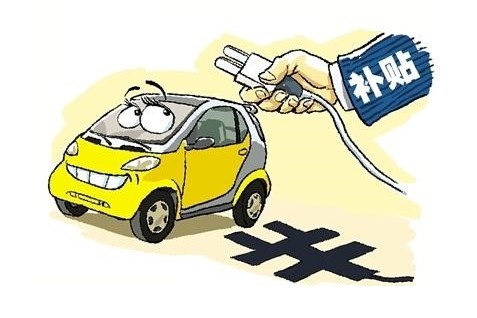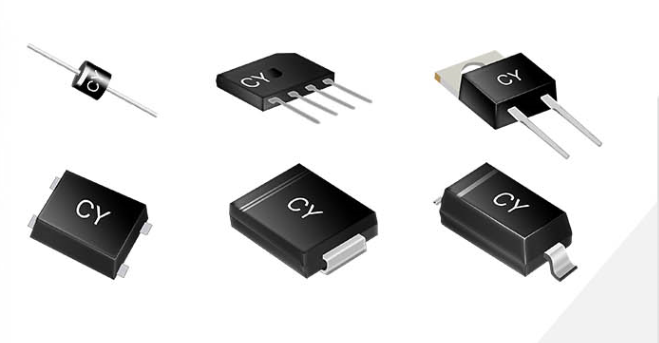After half a year of policy silence, the subsidy policy for new energy vehicles was officially introduced. In 2013, the maximum subsidy for pure electric passenger cars is 60,000 yuan / unit, and the subsidy for fuel cell passenger vehicles is 200,000 yuan / unit; the subsidy standard will be reduced by 10% and 20% in the next two years.
On September 17, the new policy of popularizing subsidies for new energy vehicles "landed". On the same day, the Ministry of Industry and Information Technology released the "Notice on Continuing the Promotion and Application of New Energy Vehicles" jointly issued by the Ministry of Finance, the Ministry of Science and Technology, and the Development and Reform Commission on its official website.
The "Announcement on Continuing the Promotion and Application of New Energy Vehicles" was officially announced, and it was clear that the promotion of new energy vehicles will continue from 2013 to 2015. Among them, pure electric passenger cars with a length of more than 10 meters are subsidized by 500,000 yuan each, and passenger cars with a pure electric mileage of more than 250 kilometers are subsidized by 60,000 yuan each. The central government allocates subsidy funds to new energy vehicle manufacturers, implements quarterly advance allocation, and annual liquidation.
"For enterprises, this is definitely a good thing." BYD Auto's relevant person in charge said. First, the new energy vehicle subsidy policy from the central government directly subsidizes to enterprises, which can make the market competition more transparent; Currency expels good coins ".
In addition, the difference from the previous is that the passenger cars in the new regulations are based on pure electric mileage. For pure electric passenger cars that reach more than 250 kilometers, each car can be subsidized up to 60,000 yuan; plug-in hybrid passenger cars The mileage of pure electric vehicles (including extended programs) is greater than 50 kilometers, and each car can be subsidized by 35,000 yuan.
The analysis believes that the intensity of support for different technology routes has diverged, indicating that the four ministries have a clear attitude towards the choice of technology routes, and pure electric is still the most important direction for the development of China's new energy vehicle industry.

The model city consists of points and faces
At the end of last year, the three-year Interim Measures for the Management of Financial Subsidies for Energy Conservation and New Energy Vehicle Demonstration and Promotion expired, and China's new energy vehicle market experienced a blank period of more than nine months of subsidy policy. With the recent "Air Pollution Prevention Action Plan" (hereinafter referred to as "atmospheric country ten"), new policies for the promotion of new energy vehicles with energy conservation and emission reduction as an important mission have also appeared in front of people.
The “Ten Articles of the Atmospheric State†determined that the concentration of fine particles in Beijing, Tianjin and Hebei, the Yangtze River Delta, and the Pearl River Delta decreased by about 25%, 20%, and 15%, respectively. In order to achieve the local PM2.5 governance goals, all regions began to strictly control pollution emissions.
According to the new round of new energy vehicle subsidy policies, the 25 demonstration cities defined in the previous round of subsidies have been adjusted, and the scope of subsidies has been transformed into a promotion model focusing on megacities and radiating to surrounding cities. The new policy for new energy vehicle subsidies shows that it will "focus on areas with heavy particulate matter management tasks such as Beijing-Tianjin-Hebei, the Yangtze River Delta, and the Pearl River Delta, and choose mega-cities or urban agglomerations with higher enthusiasm for implementation."
"This model can give play to the linkage effect of the central city and surrounding cities, making up for the previous situation where only the model cities have a relatively isolated point distribution." The relevant person in charge of the Ministry of Industry and Information Technology said. In the "Ten Atmospheric Countries" recently released, it also clearly stated the goal of "significantly improved air quality in Beijing, Tianjin, Hebei, the Yangtze River Delta, and the Pearl River Delta". At the same time, regions such as Beijing, Tianjin, Hebei and the Yangtze River Delta also limit the total amount of pollutant emissions based on provinces, which has formed a linkage effect with the new model of "regional promotion" of new energy vehicles.
According to statistics, as of the end of 2012, the central government has arranged a total of 8.8 billion yuan in subsidies and 25,832 demonstration cities to promote 27,432 vehicles of various types of energy-saving and new energy vehicles; by March 2013, the number of demonstration and promotion reached 39,800 vehicles; by this year At the end of July, the output of new energy vehicles nationwide reached 47,800. Some analysts believe that due to the poor actual effect received in the last round of three-year new energy vehicle subsidies, the new round of new energy subsidy policies will be evaluated and evaluated at the time point of one year, and those that fail to complete the annual promotion target will be eliminated. city.
Mega cities promote 10,000 vehicles in three years
In terms of quantity, from 2013 to 2015, the cumulative promotion of new energy vehicles in mega cities or key regions will not be less than 10,000, and the cumulative promotion of other cities or regions will not be less than 5,000.
It is worth noting that the new energy vehicle subsidy policy clearly stipulates that "the number of foreign brands in the market of the promoted application shall not be less than 30%", and emphasizes that "no barriers shall be set or disguised to restrict the purchase of foreign brand vehicles."
In this regard, a person in charge of a related auto company said that clarifying the procurement ratio of foreign brand vehicles can alleviate the local government's “favoritism†to local companies in the past, making it more difficult for companies to promote in various cities. According to industry insiders, taking Beijing as an example, Futian electric vehicles, as well as Changan and BYD electric vehicles, have begun various road tests. Once the new energy subsidy policy is implemented, these auto companies will be likely to obtain local government purchase orders.
The most concern of enterprises is that, in terms of subsidies, the central government allocates subsidy funds to new energy vehicle manufacturing companies, implements quarterly advance allocation, and annual liquidation. "This is to expand the sales of new energy vehicles, thereby further reducing costs." The analysts said.
The previous policy was that when purchasing new energy vehicles in the public domain of each model city, the relevant subsidy amount was handed over to the new energy vehicle promotion office in the model city based on the sales of new energy vehicles in the city. Disbursed to car companies. The latest subsidy policy obviously reduces the intermediate links.
High Quality Rectifier Diode with Competitive Price, Fast Shipping, Order Now.Years of experience.
The company has domestic advanced diode production equipment, complete testing methods and quality assurance system.
Advanced Technology.Electronic component diodes are widely used in household appliances, green lighting, network communications, power chargers, automotive electronics and other fields.

Rectifier Diode,diode Bridge Rectifier,KBU Bridge Rectifiers,rectifier diode,Fast rectifier diode
Changzhou Changyuan Electronic Co., Ltd. , https://www.cydiode.com
